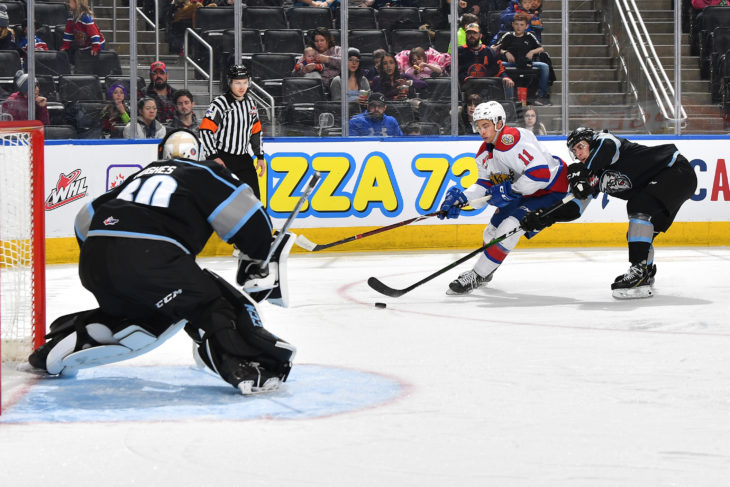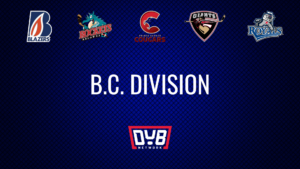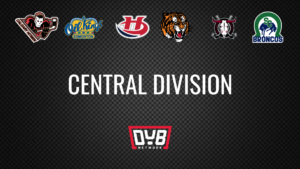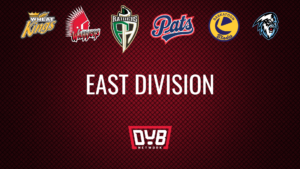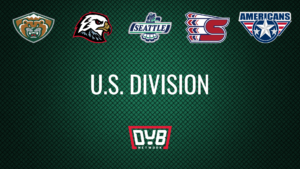The WHL is in Winnipeg, and after a memorable inaugural season, the Winnipeg ICE have cemented themselves in the Manitoba capital’s vibrant hockey scene. In that inaugural season, the ICE set themselves up for a long, successful window of contention on and off the ice.
On the ICE
When the season shut down, the Winnipeg ICE were riding a four-game winning streak, sat second in the East Division, and, most importantly, had that beautiful “X” next to their name signifying a clinched playoff spot.
Had the playoffs happened, we may have been treated to a fantastic “Battle of Manitoba” bout with the Brandon Wheat Kings, which could have developed a fierce rivalry for years to come. Instead, the ICE missed out on postseason hockey for the fifth season in a row in an unfortunate “what if?” campaign.
“We’ll never know, but I know our team was looking forward to playoffs,” said GM Matt Cockell.
This would have been the first postseason experience for most of the ICE players. It would have been fun to see what the ICE’s stars like Peyton Krebs and Connor McClennon could do with the stakes at their highest.
While the ICE won’t get to experience postseason hockey, the work the team put in this season certainly wasn’t wasted.
A Quick Refresh on Last Season
In 2018-29, the Kootenay ICE finished second last, ahead of only the Swift Current Broncos. Their disappointing 36 points (13-45-7-3) was only half what they needed to make the playoffs in the Eastern Conference.
This past year, the Winnipeg ICE fared much better:
- 38 wins, the most in the East Division, and almost triple last year (38-24-1-0).
- 77 points, ninth in the league and only behind the defending champion Prince Albert Raiders in the division.
- Only lost once in extra time, the least amount of OT/SO losses in the league.
- Finished seventh in goals for (231) and eighth in goals against (207).
Also noteworthy was the team’s discipline: their 559 penalty minutes was the lowest mark in the league, pairing well with being the only team in the WHL that was shorthanded fewer than 200 times (194). This, along with the above stats, speaks to the development of both the players and head coach James Patrick and his staff.
Cockell felt Patrick did a tremendous job in his third year as head coach, both in guiding the ICE to their best season under his tenure and in helping the players reach their goals. The young stars were asked to shoulder more burdens than ever before. Cockell knew it was a risk, but it was a risk both he and Patrick wanted to take to help the ICE and their players grow.
“We didn’t know how quickly [our] young players could accept responsibility,” said Cockell while reiterating his goal for his players. “Our mission is to help our young players grow.”
And Grow They Did
Peyton Krebs scored at a 104-point pace (fourth-best in the WHL), and Connor McClennon had 20 more points than the previous season in four fewer games. Even more impressive was Owen Pederson, who saw his teammates’ production rise and decided to do that but cranked up to 11.
Pederson’s goal, assist, and point totals improved seven times over his production from the previous season. He transitioned from a replaceable depth player in his rookie campaign to a core contributor, laughing in the face of the “sophomore slump.” Not a bad way to get yourself noticed by NHL scouts in your draft year.
The Winnipeg ICE supplemented their young stars with the team’s established veteran core, notably Isaac Johnson, the team’s leading scorer with 73 points, and their netminder Liam Hughes, who enjoyed his best WHL season with a 2.53 GAA and a .914 save percentage. However, Johnson’s WHL career is now over, as he signed an AHL contract with the Manitoba Moose, so the ICE will need to find a way to replace their top scorer and a leader in the locker room.
Liam Hughes also highlights one other person who had a great opening campaign with the ICE: GM Matt Cockell. Cockell picked up Hughes in free agency and traded a bevy of draft picks to land Red Deer Rebels captain Dawson Barteaux to complete the team’s blue line. This gave the coaching staff the puzzle piece it was missing to make a championship roster. Cockell will need to put together another solid season to have the ICE in position to go far into the WHL playoffs when the new season begins.
What’s Next?
Cockell knows that his players will be ready to compete when the WHL resumes play. He’s been impressed with how the players have taken to the resources the ICE have provided them during the COVID-19 pandemic, and he’s excited to see how all the players have grown.
“Our players have really high expectations for themselves [and] the expectation is for our group to get better every day,” said Cockell.
The WHL is tentatively set to begin the 2020-21 season October 2.
Off the ICE
The first number you’d look for when wondering how the Winnipeg ICE fared from a business perspective isn’t flattering: the ICE finished dead last in attendance, with 451 fewer heads on average than the team with the next lowest attendance (Swift Current.) Their average attendance of 1,503 trailed far behind the Kootenay ICE’s 2,214 tally in 2019.
However, simply looking at that number ignores perspective and context, which help reveal how successful the ICE actually were this year:
- They play in the smallest arena in the WHL, the Max Bell Centre. The rink, home to the University of Manitoba Bisons, has a listed seating capacity of 1,400, meaning the ICE on average filled the place to 107.36 percent capacity. Not too shabby. For comparison, in Kootenay’s final campaign, they sold out 51.92 percent of Western Financial Place. The Winnipeg version of the ICE more than doubled the draw of their predecessors.
- While the ICE were packing the barn, most of the rest of the WHL had a rough campaign. Only five of the remaining 21 teams (Everett Silvertips, Kelowna Rockets, Kamloops Blazers, Vancouver Giants, and Prince Albert Raiders) saw their attendance rise from last season. Of the 16 teams that saw a drop, only three (Seattle Thunderbirds, Lethbridge Hurricanes, and Tri-City Americans) saw less than 100 fewer heads. Special mention to the Hurricanes who watched their attendance drop by a staggering one fan. I don’t know what Lethbridge did to that poor one fan, but apparently it was too much.
With all that in mind, it looks like the Winnipeg ICE had a successful inaugural season in their rental home.
But, why?
What worked for the ICE in a down year for the WHL?
First, 50 Below Sports + Entertainment took advantage of market frustration among some hockey fans with the top dog in town, the Winnipeg Jets. Patrons were weary of the high prices for tickets and food at games (a problem throughout the NHL), leading some to turn to the ICE for a more affordable high-level hockey experience.
“We had some feedback regarding tickets and we took it and developed the Full Season Access Pass,” said Mack Heisinger, manager of business operations and digital media.
“[It lets you] use the tickets how you want and when you want.”
This pass, which will come into full effect next season, allows access to games for less than 15 dollars a game. For students and kids under age 12, it’s even cheaper at $8.10 and $2.91 per game, respectively.
WHL hockey for the price of a McDonalds combo? Yes, please.
Keeping the Fans Engaged
Of course, simply being cheap isn’t everything; the ICE had to make sure people wanted to come back.
How to do that? Build a fun atmosphere and pack the building every night. To help with that, the ICE ran game promotions almost every game.
“We like to have themes at our games and give our fans another element, whether it was bringing in a mechanical bull or having a live DJ,” Heisinger said.
Obvious choices like a Halloween night went well alongside promotions like “Pink the Rink” Anti-Bullying Night (Mack Heisinger’s personal favourite) and 50 Below Hockey Day where a Winnipeg ICE ticket for an evening game also allowed for free entry to the afternoon’s MJHL Winnipeg Blues game (another 50 Below property). These themes gave each game a special feel, that a ticket was for more than just a hockey game.
The Next Step
It’s unknown how many, if any, promotions the ICE will get to run when the WHL comes back (fingers crossed for October 2) as even when WHL hockey blesses us once more, we may not be able to watch it live.
Manitoba has done excellent in flattening the COVID curve like a pancake, and the ICE won’t want to be the ones to ruin that. The Winnipeg ICE will follow the WHL’s return to play guidelines when play resumes to ensure everyone can enjoy ICE hockey safely. Heisinger added the team is planning new promotions and paths to take to make games more exciting for when fans can return, but nothing is ready to announce.
Overall, the ICE had as much success off the ice as they did on it. While there are areas to improve, some of which will come naturally when their home rink is fully built, much of it will come from the improvements Heisinger and the rest of the off-ice Winnipeg ICE staff can concoct.

